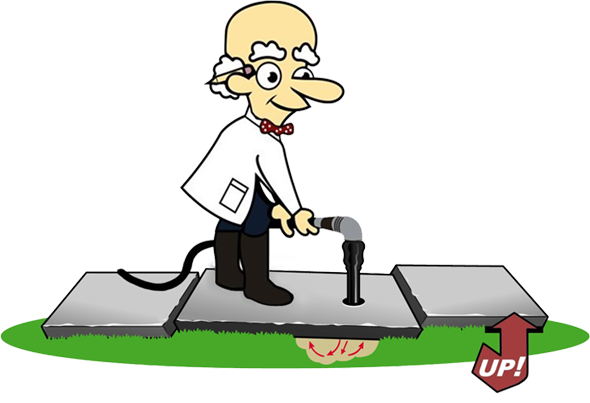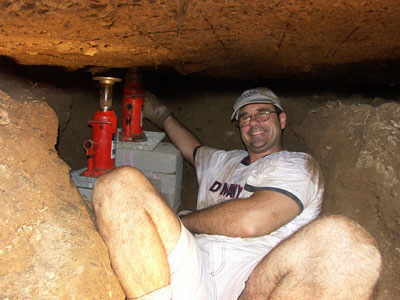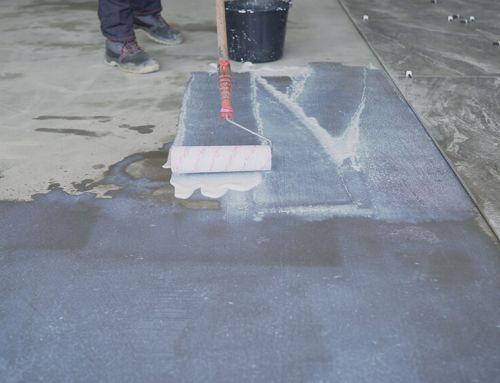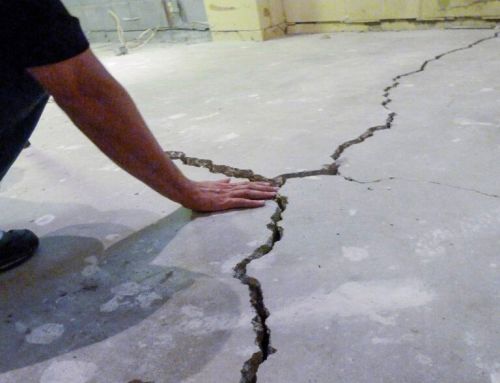IN THIS ARTICLE
Concrete slabs provide stability and support for walking surfaces, vehicles, and more. However, over time, a concrete void can develop beneath these slabs, compromising their structural integrity and posing potential risks. You may also notice animals burrowing under your concrete slab. Understanding the causes of void formation and implementing effective repair solutions is crucial to maintaining the longevity and safety of concrete structures.
Causes of Voids Under Concrete Slabs
- Soil Erosion and Settlement: One common cause of an air void under a concrete slab is soil settlement. Over the years, soil beneath the slab may erode due to water movement, improper drainage, or natural settling processes. This creates voids, leading to instability in the concrete.
- Poor Compaction: Inadequate soil compaction before the concrete is poured can result in voids beneath the slab. If the soil is not compacted correctly, it may settle over time, causing the concrete above it to sink and form voids. You may notice a void under your driveway or a void under your concrete pool deck developing.
- Water Infiltration: Water significantly contributes to void formation under concrete slabs. Poor drainage, plumbing leaks, or improper waterproofing can allow water to infiltrate the soil. Over time, this water weakens the soil, leading to erosion and the creation of voids.
- Organic Material Decomposition: Organic materials like tree roots and vegetation can decompose over time. As these materials break down beneath a concrete slab, a void under a slab may form, jeopardizing the slab’s stability.
Repair Solutions for Voids Under Concrete Slabs
- Slab Jacking: Slab jacking, or mudjacking services, is a common and cost-effective method for filling voids under concrete slabs. In this process, a slurry of cement grout material is injected beneath the slab. As the slurry solidifies, it lifts the slab to its original position, filling the voids in the process.
- Polyurethane Foam Injection: Polyurethane foam injection is a secondary void-filling method. Polyurethane foam is injected into the voids beneath the slab. This foam expands and hardens, filling the space. However, poly isocyanates or poly foam also have a history of associated risks, such as flammability, self-combustion, toxicity, recycling issues, and a higher material cost. You can read more about “Why mudjacking, not poly foam still remains the best option for concrete raising”.
- Compaction Grouting: Compaction grouting involves injecting a cement slurry grout into the voids beneath the concrete slab. This grout displaces loose soil and compacts the surrounding soil, filling the voids. Compaction grouting is particularly useful for addressing voids caused by poor compaction during the initial construction.
- Drainage Improvement: Addressing the root cause of void formation is essential for long-term stability. Improving drainage around the structure, redirecting water away from the slab, and fixing plumbing leaks can prevent further void development. Proper drainage helps maintain the integrity of the soil, reducing the risk of erosion and settlement.
- Crack Repair and Waterproofing: To prevent water infiltration, wide joints in the concrete should be promptly repaired, and the slab should be properly waterproofed. This addresses the immediate issue and prevents future void formation due to water-related factors.
While a set cost for concrete leveling can be provided, the cost to fill voids under a concrete slab will vary based on the quantity of material required to fill and support your concrete. Addressing voids under concrete slabs is crucial for maintaining the structural integrity and safety of buildings and infrastructure. By understanding the causes of void formation and implementing effective repair solutions, property owners and construction professionals can ensure the long-term stability of concrete structures.
Whether using traditional methods like slab jacking or techniques like polyurethane foam injection, proactive measures can prevent further damage and enhance the resilience of concrete slabs against void formation.
Regular maintenance, proper drainage, and soil stabilization are critical components of a comprehensive strategy to mitigate the risks associated with voids under concrete slabs, ensuring the longevity and safety of structures for years to come. If you are searching for “contractors near me” to fill voids under a concrete slab or have sunken or settled concrete in our NJ and Eastern PA service area, contact Concrete Chiropractor®, trusted experts in concrete leveling, for a professional evaluation.
- Garage Floor Raising and Coating: The Ultimate Guide - June 4, 2024
- Mudjacking Cost: 5 Factors That Affect It - April 10, 2024
- What is The Average Cost of Concrete Leveling in Belle Mead, NJ? - April 4, 2024








